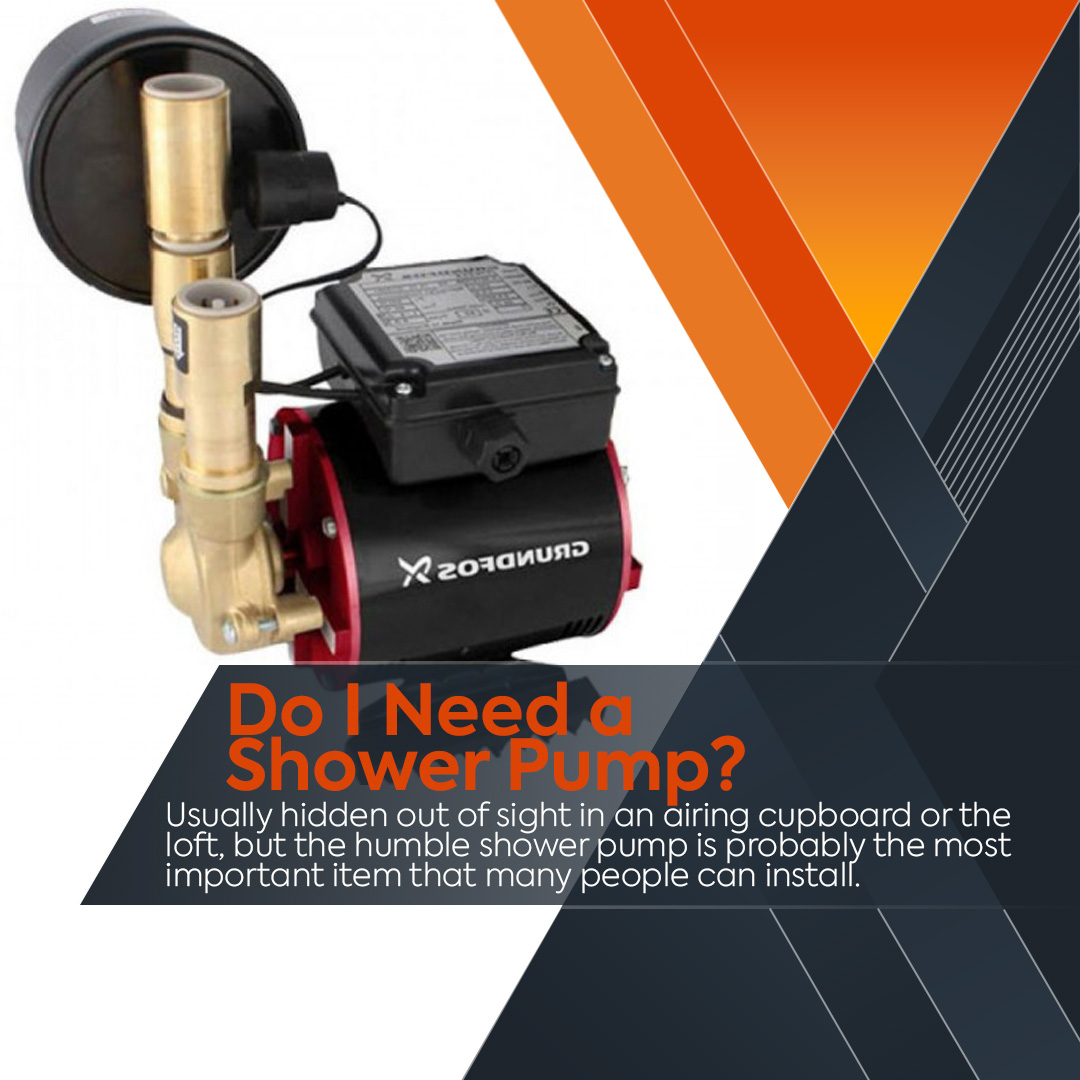Changing lifestyles have led to a dramatic increase in the demand for powerful showers in the last 20 years. Once seen as the preserve of the continental bathroom, time pressures and the sheer luxurious experience provided by a power shower have made them a must-have item for more and more British families.
But by no means does every home have a hot and cold water system capable of supplying the large amounts of water at a pressure that a modern shower demands. An older British home contains a vented hot water cylinder with a cold cold water tank often located in the loft. In many cases, there is simply not enough distance in height between the cylinder and the cold-water tank to provide enough pressure for that amazing power shower experience. To run a standard gravity-fed shower without additional pressure, there has to be a distance of at least 3ft (900mm) between the base of the cold water tank and the shower head.
Shower pumps are the solution.
Short of installing an unvented, mains pressure cylinder or combination boiler – both of which can be very expensive changes – the answer for many is a shower pump. Installing a modern shower pump can raise the water pressure from under 0.3 bar (1.0 bar is the equivalent of 10 metres of head) to up to 3.0 bar. You need a minimum of 0.5 bar of water pressure for the shower to work properly. Even if you have 0.5 bar of pressure, if the water is turned on elsewhere in the house, your shower could suddenly become either a freezing waterfall or an inferno.
A shower pump, on the other hand, will deliver water at a consistent pressure and will give you a completely different experience from a gravity-fed shower. Showering is no longer a rather insipid affair where you’re afraid of that sudden excruciating change in water temperature. Without a shower pump, it can be hard to get a consistent flow of mixed hot and cold water with a shower pump, showering can literally be a blast.
Get the installation right and showering will be a consistent and luxurious experience with powerful jets of hot water on demand.
Do you need one?
If you don’t want to go crawling about in your loft to find out how much head there is between the cold-water tank and where your shower head might be situated, there is a simple test for determining whether you need a shower pump. If you have separate taps for hot and cold water in your bath, turn them on as far as they will go and look at the flow of water between the two. The cold will be coming out at mains pressure. If the flow is equal between the hot and cold, you should be able to install a shower. If -as in most cases with a vented system – the hot flow is much lower than the cold, then you’ll most likely need a shower pump.
Additional tips.
There are some other things to consider if you’re thinking about having a shower pump installed:
- Is your hot water cylinder large enough? Monitor how much hot water your cylinder delivers for a few days. If you have a large bath, see how much hot water you can fill it with before the hot runs out. If it is less than half full before cold water starts coming out of the hot tap, you may need a larger cylinder.
- Consider the size of your cold water ‘header’ tank. With a shower pump, cold water storage capacity is equally as important as hot because the higher pressure pumps deplete water at a rapid rate. As well as mixing with hot water at the mixer in the shower, the cold supply has to replenish the hot water that comes out of the cylinder.
- Have you got an airing cupboard or another hidey hole to put the shower pump? Although modern pumps are considerably quieter than their older counterparts, they still make a noise and many people choose to put them in a cupboard to dampen the sound, particularly for those wanting a shower early but not wanting to disturb others in the house. There are restrictions around where a pump can be sited in relation to water pipes and cylinders, but your installer should be able to advise you.

